The Red Fort is located in Delhi, India. The memory of the red fort has different interpretations that emerged and developed over the years. The fort plays an important role in the memory of and remembrance of important events in Indian history. The recognition as a symbol of Indian independence stems from the connection with the Indian uprising in 1857 against British colonialism. However, the purpose often changes to satisfy different groups.
History of the Red Fort
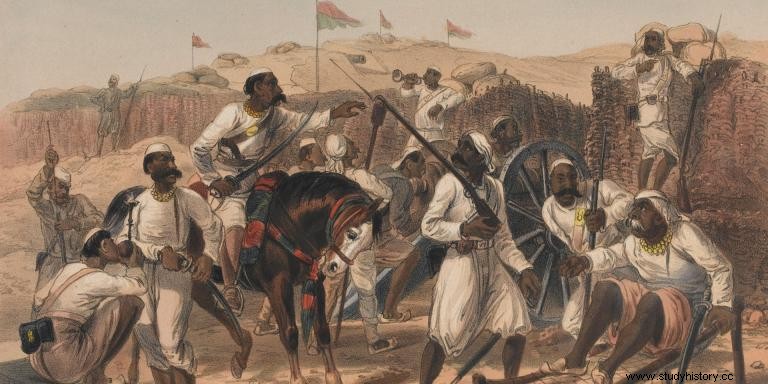
De lal qila , or Red Fort, was built between 1638 and 1649 in Old Delhi, India by the fifth Mughal emperor, Shah Jahan, as a palace fort for the capital of Shahjahanabad. It appears along with another fort, Salimgarh. This combination is known as the Red Fort Complex. This complex became a UNESCO World Heritage Site in 2007. The name comes from its red sandstone walls, and the structure is a combination of different architectural traditions. It draws its influence from Hindu, Islamic and Persian traditions.
European powers in the 17th and 18th centuries sought trade opportunities in Asia through small groups of investors and businessmen. The British East India Company is one of these groups. It operated out of India for a few decades, exporting cotton and silk as well as spices. The company placed local branch officers to manage trade and govern in different territories. In 1757 it took full control of India.
The Indian Uprising of 1857
The Indian uprising in 1857 was a response to the injustice the company showed the Indian people. The British forced Indian soldiers to use cartridges greased with cow and pig fat. This went against both Hindu and Muslim ideologies and triggered outrage. This was the last straw in a series of breaches committed by the British East India Company. As a result, outbreaks of violence occurred in large parts of northern and central India.
A division of the Indian Army marched to Delhi with the intention of taking back the city. They instituted Bahadur Shah II, the Mughal king who lived in the Red Fort, as the face of the uprising. Mughal power had fallen sharply under British rule, with Bahadur Shah's position largely ceremonial. However, the Indian people believed that placing support behind a Mughal king would break British control.
The Indian rebels attacked British architecture and structures, such as Delhi Bank and the army camp. They fought the British with fervor. However, the Indian army was not as centralized and unified. As a result, the uprising eventually failed, resulting in a brutal restoration of British rule. After the uprising, the British East India Company dissolved. The Crown of England took direct control of India until the partition in 1947.
Colonial manipulation
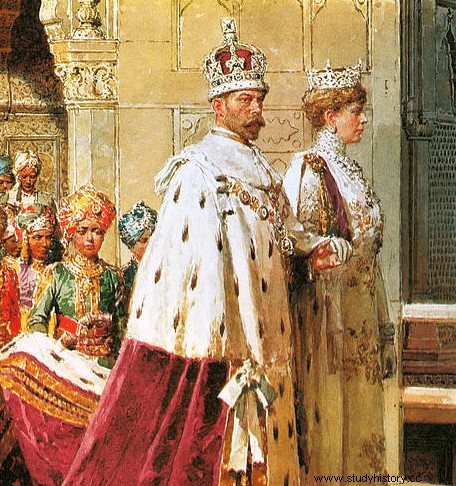
Destruction and reuse of the Red Fort
The Red Fort served as a symbol of Delhi resistance and determination. During the uprising of 1857, the British looted and destroyed parts of the Red Fort. They also used it for use by British regiments. The British changed entire rooms to serve as garrisons for British troops. They turned Diwani'Am , the hall where the emperor used to greet guests, into an army hospital.
The British also cleared the buildings around the fort, including a mosque built by Shah Jahan's wife and historic bazaars that operated since the fort was built. By destroying these elements, the British erased aspects of Indian history.
The British took parts of the walls called pietra dura panels along with other objects and even the clothes of the royal family. These still live in the British Museum. This targeted destruction is a common tactic seen today that destroys a group's collective identity and destroys the power that the monuments hold.
The British tore down walls and structures representing Mughal and Indian power. They wanted to emphasize the failure of the uprising so that the people would remain obedient to the British. The failure of the British East India Company and the takeover of the British Crown led to the restoration of the destroyed parts of the Red Fort. They erased their own role in the brutality that led to the uprising and beyond.
Celebrations
The Red Fort also held gatherings and celebrations. The British leaders wanted to present themselves and the fort as symbols of a new era of British rule. For the coronation of King Edward VII in 1903, Lord Curzon, the Viceroy of India, oversaw the restoration of the Red Fort. The British rebuilt everything they destroyed in an attempt to erase evidence of colonial vandalism.
The restoration of the Red Fort presents a changed history that depicts the British as rulers who are concerned with the preservation of ancient Indian architecture. However, they were the reason the fort had to be rebuilt. The British created a certain memory by choosing which parts of the uprising in 1857 benefited them.
Mughal Association
Furthermore, the British Crown tried to attach itself to the Mughal monarchs associated with the Red Fort through ceremonies called durbars . In 1911, King George V and Queen Mary introduced themselves to the rest of Delhi on the balcony of the fort. Previously, only Mughal emperors performed. The British also encouraged tourism in Red Fort, where guides discussed the Mughal Empire and the 1857 uprising. These guides spoke primarily of the "sacrifices" made by British soldiers during the 1857 uprising and the generosity of the British Crown. They did not refer to the cause of the uprising or the British brutality. The British positioned themselves not only as monarchs equal to the greatness of the Mughal Empire, but as superior rulers.
The Red Fort as a symbol of Indian independence
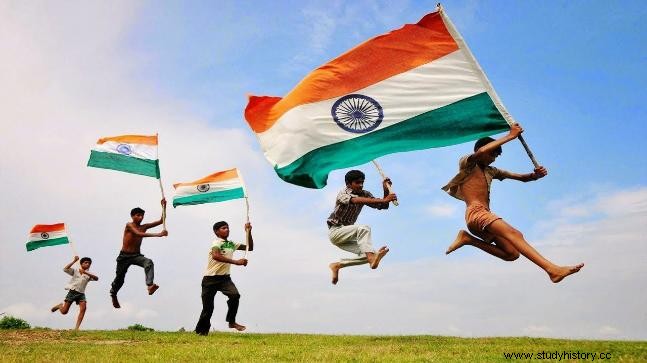
During the 1857 Uprising
The Red Fort also represents political and social gain for the Indian nation. After World War II, the British sent three officers from the Indian National Army (INA) to public trial at the Red Fort in 1945 for treason against the crown. They believed that punishing these officers would demonstrate their authority over the Indian people. However, it ended up having the opposite effect.
National protests and demonstrations broke out across the country, and the expression Chalo Dilli (on to Delhi) became a rallying cry. The three INA officers were Hindus, Muslims and Sikhs, three of the largest religions in India. This established the Red Fort as a symbol of anti-colonial resistance and unity among the Indian people.
Reruns
India gained its independence in 1947. The first Prime Minister, Jawaharlal Nehru, delivered the first national speech at the Red Fort. Since that moment, every prime minister has given a speech at the Red Fort on India's Independence Day. This cements the Red Fort as a representation of freedom and a unified Indian identity. A national Indian identity has been fought by the Indian government. The government hosted several re-enactments of the 1857 uprising in Delhi at Red Fort. It wants to "help Indians stay rooted" and preserve the Indian heritage. They downplay the brutality of public spending, instead fighting for the bravery of Indian soldiers and the power of religious unity. In this way, the Indian government celebrates Indian history through the Red Fort to preserve its heritage in a world of connection and homogenization.
Symbol of prosperity
At the same time, the Indian government is using the Red Fort to build a new image of India as a prosperous and advanced nation. The Archaeological Survey of India requested that the Red Fort be added as a UNESCO site. They hoped to get economic and social resources related to tourism. The Red Fort Reborn project sought to restore areas of the Red Fort that had been destroyed to disprove the common perception of India as a "backward" or "developing country". Leaving the ruined parts of the fort in the capital of India would prevent the image of India as successful.
However, scientists and conservationists argued against the restoration. They thought it was more about beautification than conservation. Instead of trying to maintain the old architecture, the government simply made it more appealing. They also claimed that those responsible for the project hid or changed parts of the story, especially related to the Mughal Empire. Critics of the project claimed that authentic material and artifacts related to India's history were lost. The Indian government used the restoration and symbolism of the Red Fort to create an official memorial that generated unified patriotism and nationalism in the Indian people as a whole.
Hindu nationalism and Muslim erasure
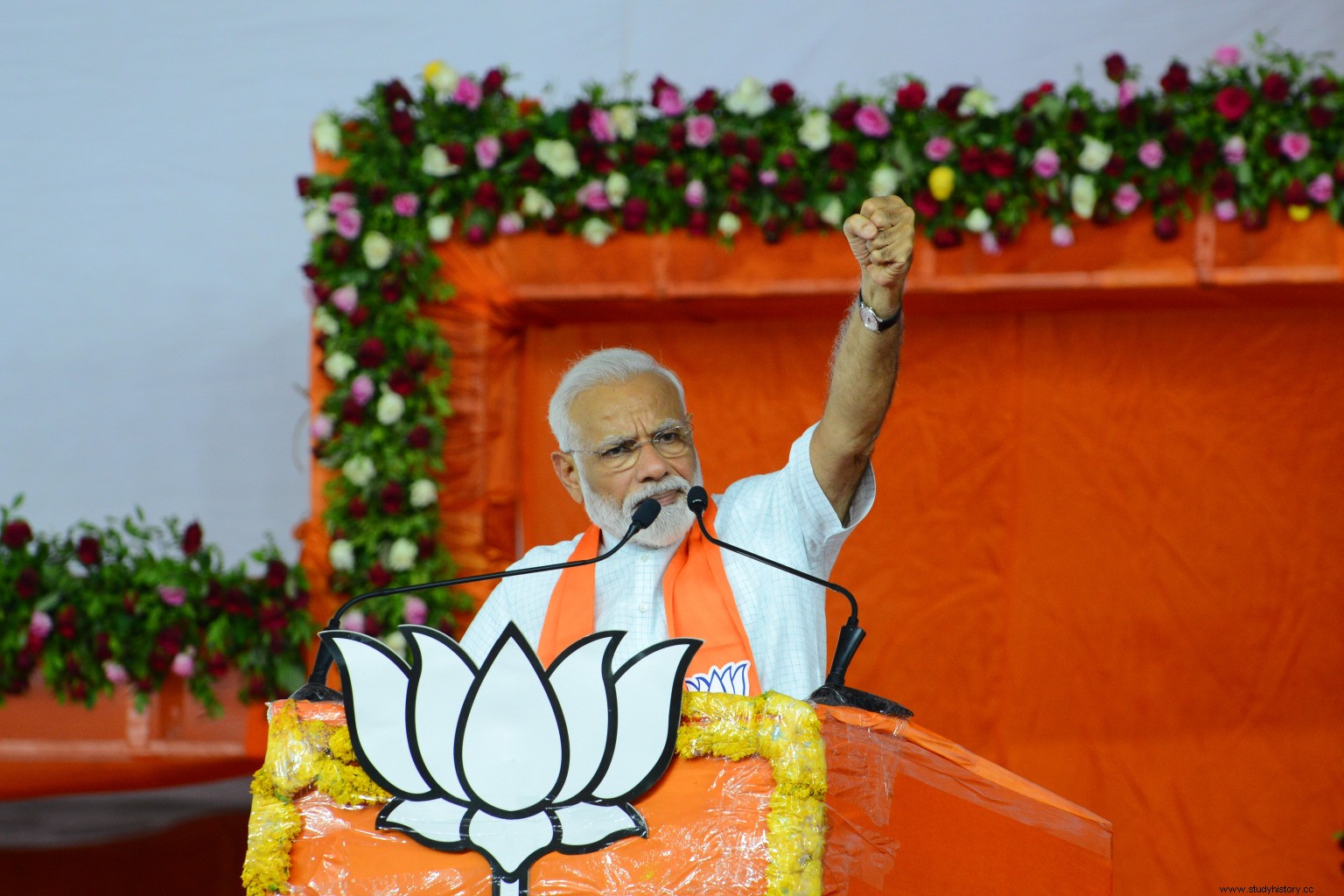
The last and most famous interpretation of the Red Fort and the uprising of 1857 is especially Hindu nationalism. Although some see the Red Fort as a symbol of greatness during the Mughal Empire and express a desire to return to these roots in a kind of Muslim renaissance, most Muslims do not claim the Red Fort for fear of consequences and discrimination . There has always been enmity between Hindus and Muslim groups in India, but British colonialism encouraged hatred.
Colonial stereotype
The British reinforced the Red Fort as Muslim architecture by incorporating their own stereotypes of Muslim people as belligerents. The British even portrayed the uprising in 1857 as a Muslim uprising. This was a successful attempt to drive anti-Muslim sentiments in the Hindu population. In 1947, the British broke up India into Hindu India and Muslim Pakistan and expelled almost 330,000 XNUMX Muslims from Delhi. This served as a catalyst for the decades of religious and political unrest that still exist today. As a result, there is no longer much mughal influence on historical events in India.
Delhi was the capital of the Mughal Empire. Therefore, Delhi has a lot of Muslim architectural and cultural influence. Due to this, the local marking of independence and the uprising is significantly lacking. This change in history and the erasure of Muslim participation in the struggle for independence allow for the choice of a particular type of past, one that is about Hinduism.
Melancholy and Hindu nationalism
An article by Stephen Legg mentions a concept called melancholy that describes a "political and creative inability to accept the past as firm and complete." Hindu nationalist groups mainly invoke this idea of colonialism in order to evoke memories of the oppression of the Hindu people in the hands of oppressors. As a result, The Red Fort serves as a demonstration of Hindu resistance against the British and Mughals. Although Mughals were Indians, Hindu nationalist groups painted them as foreigners, portraying India's Muslim minority as outsiders as well. Because this mentality describes a story of sacrifice for Muslims, Hindu extremists feel justified in their aggression against Muslim people.
The BJP (Bharatiya Janata Party), a right-wing Hindu nationalist political party, benefits almost directly from this remembrance of the Red Fort and India itself. It advocates for hindutva , an ideology that defines Indian culture solely in terms of Hindu values. This means that Hindu nationalist parties refer to India as a Hindu country instead of one of several religions and identities. The BJP is currently the leading party in the Indian government with its leader Narendra Modi as prime minister. Hindu nationalists manipulated the memory of the Red Fort. As a result, they have managed to change the collective memory of the Indian people. They have enormous political power and expel non-Hindu minorities.
Memories of the Red Fort
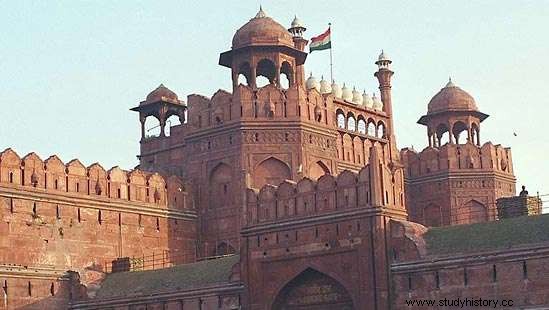
Different groups of people have different memories associated with the Red Fort. The British destruction and restoration of the Red Fort established a memory that painted the British in a benevolent light. Because history tends to favor the victors, non-Indians know the 1857 uprising as the 1857 mutiny or Sepoy. The Indian memory of the Red Fort presents it as a symbol of resistance and independence from British colonial rule. This is where the national leaders give their speeches to celebrate Indian unity. The Indian government's restoration project attracts tourists and receives validation for the country. It presents India as an advanced and complex nation, but favors beauty over preservation. It focuses on creating an appealing attraction instead of restoring the architecture. The Hindu nationalist interpretation of the Red Fort erases the Muslim influence on Delhi and Indian history. Instead, it creates a changed memory of an exclusively Hindu country.
The red fort is important for different groups of people. The memory of the fort changed with time and context. It witnessed monumental moments in Indian history that made it a symbol of freedom and independence.
